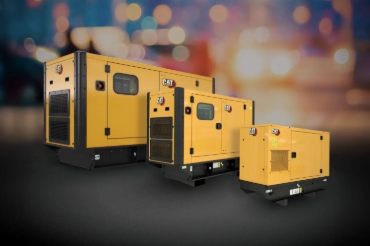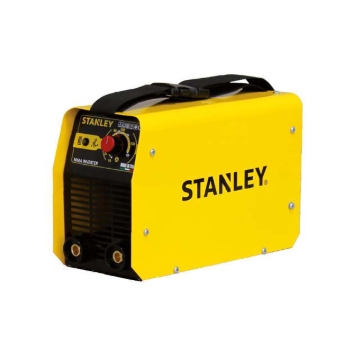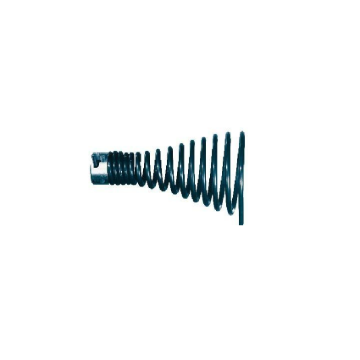Equipment
S-Ks Tools USA Safety Glasses Goggles Spectacles (Yellow)
TSF-70031
Safety Glasses Goggles Spectacles (Yellow)
₱88.00
Stanley MMA Inverter Welding Machine STWD130IC1
STWD130IC1
MMA Inverter welding machine 130A-KIT
₱12,900.00
Toho Hydraulic Hand Pallet Truck, TOCBYIIIA/CYPH
TOCBYIIIA/CYPH
Hydraulic Hand Pallet Truck 3.0 TOns Capfork 685x1200mm
₱30,500.00
WILO DUPLEX / TRIPLEX INVERTER BOOSTER SYSTEM MHIKE SERIES
MHIKE-D404A, W804UA , T804UA
WILO DUPLEX / TRIPLEX INVERTER BOOSTER SYSTEM MHIKE SERIES
Wilo Duplex / Triple Inverter Booster Pump System MHIKE Series
Simplex Inverter Booster SystemMhike Series Model MHIKE-D404A MHIKE-W804UA MHIKE-T804UA Power Output (HP x Unit) 2 x 2 3.3 x 2 3.3 x 3 Power Supply (V/Hz)...
Vendor: Wilo
Availability: In Stock
Product Type: Water Pump
₱850,500.00
From ₱325,001.00
Yale Key Box 300 x 240 x 80mm, YLHYKB/540/BB2
YLHYKB/540/BB2
Yale Key Box 300 x 240 x 80mm
₱1,982.00
ZEKOKI AIR COOLED DIESEL ENGINE
ZKK178FS-DE , ZKK186F-DE , ZKK186FM-DE , ZKK186FP-DE , ZKK186FPM-DE , ZKK186FS-DE , ZKK186FA-DE , ZKK186FAM-DE , ZKK186FAP-DE , ZKK186FAPM-DE
ZEKOKI AIR COOLED DIESEL ENGINE
MODELS : ZKK178FS-DE , ZKK186F-DE , ZKK186FM-DE , ZKK186FP-DE , ZKK186FPM-DE , ZKK186FS-DE , ZKK186FA-DE , ZKK186FAM-DE , ZKK186FAP-DE , ZKK186FAPM-DE
ALL MODELS ARE : AIR COOLED , 4 STROKE , VERTICAL, SINGLE CYLINDER , DIRECT INJECTION DIESEL ENGINE
From ₱12,201.00
Axis Single Bowl Nano Kit Sink W/ Drainer, AXS1454420SNC
AXS1454420SNC
Single Bowl Nano Kit Sink W/ Drainer
₱4,899.00
Charbroil 2B IR CastQ Grates , Folding Shelves 5 skewers CB467700117
CB467700117
2B IR CastQ Grates , Folding Shelves 5 skewers
₱37,500.00
CHUBB SAFE VIPER SAFE 35 KL+KCL-GUVS35KL+KCL
GUVS35KL+KCL
CHUBB Viper Safe Deposit Box is an ideal security box to store and safeguard cash, valuable items, and invaluable documents at home or in the office. CHUBB Viper safe box comes with both certified security against burglary & fire, securing your valuables in the security deposit box for up to 30 minutes during a fire emergency situation. CHUBB Viper Safe Box comes in 4 sizes ranging from 36 liters to 91 liters per safe security box. CHUBB Viper Safe Deposit Box offers Electronic Lock only as a safe box lock option.
₱56,250.00
CHUBBSAFE SENATOR- SIZE 2 KL+EL W/1 SHELF-GUSS2KL+EL
GUSS2KL+EL
Secure your cash and valuables in your home or small office: Senator from Chubbsafes is a range of compact, certified safes providing dual protection against burglary and fire. You want a compact safe to store your cash and most valuable personal items in your home or office. But you also need a cost-effective solution that offers an entry-level security grade to meet your demanding security needs. Senator from Chubbsafes offers EN 1143-1 burglary protection and EN 15659, LFS 30P for up to 30 minutes of fire resistance certified to ECBoS standards. The minimalist design is discreet yet effective, providing maximum security without taking up too much space or exceeding your budget.
₱95,000.00
CONCRETE VIBRATOR SET ( DIESEL)-BS170F+F+C
BS170F+F+C
CONCRETE VIBRATOR SET ( DIESEL)-BS170F+F+C
₱23,500.00
Deli Sewage Submersible Pump EDL-WQD1500-E1
EDL-WQD1500-E1
EDL-WQD1500- E1 Deli Sewage Submersible Pump 1500W 2HP
₱20,648.00
₱10,324.00
INGCO High Pressure Washer, HPWR14008GP
HPWR14008GP
INGCO High Pressure Washer HPWR14008GP
₱5,950.00
Jinmao Aluminum 3 Steps Household Ladder 150kg, JMAO113103
JMAO113103
Jinmao Aluminum 3 Steps Household Ladder 150kg
₱3,095.00
₱2,940.25
KNOCK-DOWN CRATE HEAVY DUTY 60 X 40 22.5 CM-ME320235
ME320235
KNOCK-DOWN CRATE HEAVY DUTY 60 X 40 22.5 CM-ME320235
₱1,045.00
MORWELD Flashback Arrestor for Welding & Cutting Oufit - 188-R
188-R
Flashback Arrestor for Welding & Cutting Oufit
₱660.00
PLATE COMPACTOR C90-EY20 YOHINO
C90-EY20
YOHINO PLATE COMPACTOR C90-EY20 YOHINO
POWERED BY ORIGINAL ROBIN ENGINES
MODEL C90-EY20
POWER (HP/RPM) 5/4000
WEIGHT 90 KG
CENTRIFUGAL FORCE (KN) 16
VIBRATING FREQUENCY (VPM) 4750
MAX TRAVEL SPEED MIN. 20-25
PLATE SIZE LXW (MM) 510X450
₱37,000.00
Ridgid Drain Gun/Sink Machine (K-45, K-45-1, K-45AF-7), 49233
49233
Ridgid Drain Gun/Sink Machine (K-45, K-45-1, K-45AF-7)
From ₱62,800.00
Ridgid Funnel Auger For Drain Cleaning Machines, 63105
63105
Ridgid Funnel Auger For Drain Cleaning Machines
₱5,300.00
Ridgid Hydraulic Knockout Punch HKO1810 1/2-inch to 4-inch Hydraulic Knockout,24587
24587
Ridgid Hydraulic Knockout Punch HKO1810 1/2-inch to 4-inch Hydraulic Knockout
From ₱159,000.00
Ridgid K-6 6-Foot Toilet Auger Snake with Bulb Head
59797
6-Foot Toilet Auger Snake with Bulb Head
₱4,860.00
Min:
₱0.00
Max:
₱18,000,000.00
₱0
₱18000000























































































































































